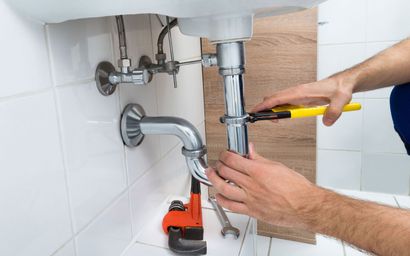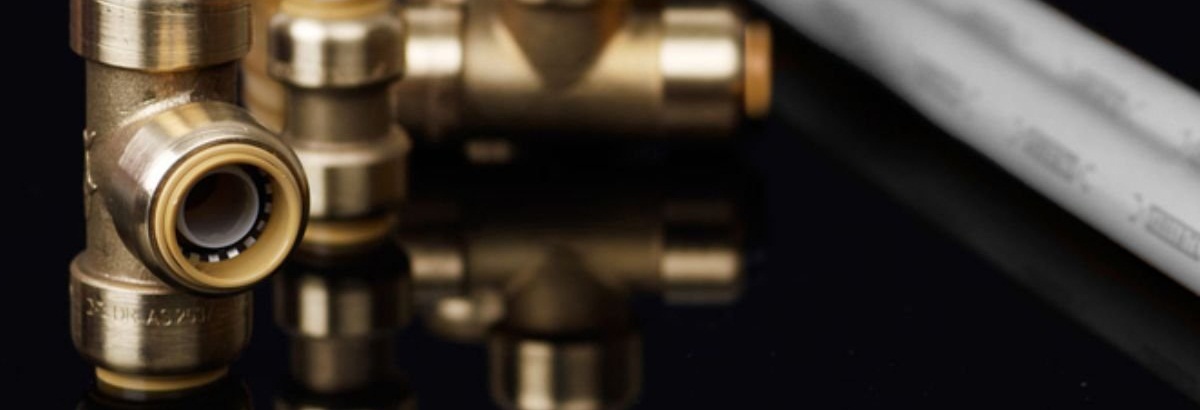Understanding The Layout of Your Property's Plumbing System
Understanding The Layout of Your Property's Plumbing System
Blog Article
Just how do you feel in relation to Plumbing Installation 101: All You Need to Know?

Recognizing just how your home's pipes system functions is necessary for every property owner. From providing clean water for drinking, cooking, and bathing to securely removing wastewater, a well-maintained pipes system is crucial for your family members's wellness and convenience. In this comprehensive overview, we'll discover the complex network that composes your home's pipes and offer suggestions on upkeep, upgrades, and taking care of common problems.
Introduction
Your home's plumbing system is more than just a network of pipelines; it's a complex system that ensures you have accessibility to tidy water and efficient wastewater removal. Knowing its elements and how they interact can assist you avoid expensive repairs and ensure everything runs efficiently.
Basic Elements of a Pipes System
Pipes and Tubing
At the heart of your pipes system are the pipelines and tubing that carry water throughout your home. These can be constructed from different products such as copper, PVC, or PEX, each with its advantages in regards to toughness and cost-effectiveness.
Fixtures: Sinks, Toilets, Showers, etc.
Components like sinks, bathrooms, showers, and bath tubs are where water is utilized in your home. Recognizing how these fixtures attach to the plumbing system assists in detecting troubles and planning upgrades.
Valves and Shut-off Factors
Valves manage the circulation of water in your plumbing system. Shut-off shutoffs are essential throughout emergency situations or when you need to make repair services, permitting you to isolate parts of the system without interrupting water circulation to the entire home.
Water System
Main Water Line
The primary water line links your home to the local water or a personal well. It's where water enters your home and is dispersed to various components.
Water Meter and Stress Regulator
The water meter actions your water use, while a pressure regulator makes certain that water flows at a risk-free stress throughout your home's pipes system, protecting against damage to pipelines and components.
Cold Water vs. Hot Water Lines
Comprehending the distinction in between cold water lines, which provide water directly from the primary, and warm water lines, which carry heated water from the hot water heater, helps in fixing and preparing for upgrades.
Drainage System
Drain Water Lines and Traps
Drain pipelines bring wastewater far from sinks, showers, and commodes to the sewer or sewage-disposal tank. Catches protect against sewer gases from entering your home and additionally catch debris that could trigger blockages.
Air flow Pipes
Air flow pipes allow air into the drain system, protecting against suction that might reduce drain and cause traps to vacant. Appropriate air flow is crucial for keeping the stability of your pipes system.
Relevance of Proper Drain
Making sure proper drainage avoids back-ups and water damages. Consistently cleansing drains and maintaining traps can avoid pricey repairs and extend the life of your pipes system.
Water Heater
Types of Hot Water Heater
Water heaters can be tankless or standard tank-style. Tankless heaters warm water as needed, while containers store heated water for prompt use.
Just How Water Heaters Attach to the Plumbing System
Recognizing just how hot water heater link to both the cold water supply and hot water distribution lines helps in detecting concerns like not enough warm water or leakages.
Upkeep Tips for Water Heaters
Consistently purging your water heater to remove sediment, examining the temperature settings, and inspecting for leakages can prolong its life expectancy and improve power performance.
Typical Plumbing Concerns
Leakages and Their Causes
Leakages can happen as a result of maturing pipelines, loose installations, or high water pressure. Addressing leakages promptly protects against water damage and mold and mildew growth.
Clogs and Obstructions
Clogs in drains and bathrooms are frequently brought on by flushing non-flushable things or a buildup of oil and hair. Making use of drain displays and being mindful of what drops your drains can protect against blockages.
Signs of Plumbing Troubles to Watch For
Low tide pressure, slow drains, foul odors, or uncommonly high water costs are indications of potential plumbing troubles that ought to be addressed immediately.
Pipes Upkeep Tips
Normal Assessments and Checks
Arrange yearly plumbing assessments to capture issues early. Try to find signs of leakages, corrosion, or mineral build-up in faucets and showerheads.
Do It Yourself Maintenance Tasks
Simple jobs like cleansing faucet aerators, looking for toilet leaks utilizing color tablets, or shielding exposed pipelines in cool climates can avoid significant plumbing problems.
When to Call a Professional Plumbing Professional
Know when a plumbing problem calls for expert knowledge. Trying complex repair work without appropriate expertise can result in more damages and greater repair service expenses.
Upgrading Your Pipes System
Reasons for Upgrading
Upgrading to water-efficient components or changing old pipes can enhance water top quality, reduce water expenses, and raise the worth of your home.
Modern Pipes Technologies and Their Advantages
Discover technologies like wise leakage detectors, water-saving toilets, and energy-efficient hot water heater that can conserve money and minimize environmental effect.
Expense Factors To Consider and ROI
Determine the in advance costs versus long-lasting financial savings when considering pipes upgrades. Several upgrades pay for themselves through minimized utility expenses and fewer repair services.
Ecological Influence and Preservation
Water-Saving Components and Devices
Mounting low-flow taps, showerheads, and commodes can dramatically reduce water use without giving up efficiency.
Tips for Lowering Water Usage
Basic routines like dealing with leakages without delay, taking much shorter showers, and running complete lots of washing and recipes can preserve water and lower your utility expenses.
Eco-Friendly Plumbing Options
Consider sustainable plumbing materials like bamboo for flooring, which is durable and environmentally friendly, or recycled glass for countertops.
Emergency situation Readiness
Steps to Take Throughout a Pipes Emergency
Know where your shut-off valves lie and just how to shut off the supply of water in case of a burst pipeline or significant leak.
Significance of Having Emergency Calls Helpful
Maintain get in touch with details for local plumbings or emergency services conveniently offered for quick feedback during a plumbing dilemma.
DIY Emergency Situation Fixes (When Appropriate).
Short-lived repairs like using air duct tape to spot a dripping pipeline or putting a pail under a leaking faucet can decrease damage till a professional plumbing professional shows up.
Conclusion.
Recognizing the anatomy of your home's pipes system empowers you to maintain it properly, saving money and time on repair work. By adhering to routine upkeep routines and staying educated about modern-day plumbing innovations, you can ensure your plumbing system runs successfully for years to find.
HOW YOUR PLUMBING SYSTEM WORKS
Which Pipes Do What?
Blue lines = fresh water supply entering the building
Red lines = hot water supply entering the building
Grey lines = pipes carrying waste away from the building and venting pipes carrying gases away from the building (through the roof)
YOUR MAIN PLUMBING SYSTEMS
There are two main plumbing systems that support your home s basic plumbing needs one that brings clean water into your home, and one that sends dirty water away from your home. Connected to the toilet, bath, shower, and other faucets in your home, these two systems keep your water flowing in the right directions.
ACCESSING FRESH WATER
Fresh and clean water is brought into your home through the main water supply line . Filtered through one pipe, this water is pressured to flow into the various fixtures in your home at any given time.
This water can be sourced from a well located on your property, a pond or river (mostly cottages), or, as in most cases, from the city s municipal water treatment centre. However, it is important to note that water that is untreated, such as the water siphoned from ponds or rivers, may not be safe to drink. Personal water supplies always need to be treated for hardness and contaminants before consumed.
MUNICIPAL WATER SUPPLIES
Improve taste and odour
Remove sediment
Eliminate hardness
Reduce chlorine
COLD WATER SUPPLY VS. HOT WATER SUPPLY
Cold water flows into your home or building through the service line, which then distributes hot or cold water to your fixtures. This line is most commonly run through a central column that runs floor to floor. Hot water runs in short and straight pipes as the longer the pipeline, the more heat that will be lost in the transfer. Having shorter pipes also allows residents to access hot water more quickly.
WASTE WATER SYSTEM
Your wastewater system is divided into two parts pipes that send wastewater away from your home and venting pipes that send sewer gas away from your home. Sewage water travels through pipes that flush the water and waste towards local sewers that are operated and managed by your city or town. Most sewer systems rely on gravity to move the wastewater to where it needs to go.
The further away from your toilet or sink, the larger wastewater pipes become. This allows for waste to be disposed of from various parts of your home or business at once without pipe blockages. The angle and flow of these pipes are also essential for keeping your waste pipes clear of build up.
https://harrisplumbing.ca/how-your-home-plumbing-system-works/

HOW YOUR PLUMBING SYSTEM WORKS
Which Pipes Do What?
YOUR MAIN PLUMBING SYSTEMS
There are two main plumbing systems that support your home s basic plumbing needs one that brings clean water into your home, and one that sends dirty water away from your home. Connected to the toilet, bath, shower, and other faucets in your home, these two systems keep your water flowing in the right directions.
ACCESSING FRESH WATER
Fresh and clean water is brought into your home through the main water supply line . Filtered through one pipe, this water is pressured to flow into the various fixtures in your home at any given time.
This water can be sourced from a well located on your property, a pond or river (mostly cottages), or, as in most cases, from the city s municipal water treatment centre. However, it is important to note that water that is untreated, such as the water siphoned from ponds or rivers, may not be safe to drink. Personal water supplies always need to be treated for hardness and contaminants before consumed.
MUNICIPAL WATER SUPPLIES
COLD WATER SUPPLY VS. HOT WATER SUPPLY
Cold water flows into your home or building through the service line, which then distributes hot or cold water to your fixtures. This line is most commonly run through a central column that runs floor to floor. Hot water runs in short and straight pipes as the longer the pipeline, the more heat that will be lost in the transfer. Having shorter pipes also allows residents to access hot water more quickly.
WASTE WATER SYSTEM
Your wastewater system is divided into two parts pipes that send wastewater away from your home and venting pipes that send sewer gas away from your home. Sewage water travels through pipes that flush the water and waste towards local sewers that are operated and managed by your city or town. Most sewer systems rely on gravity to move the wastewater to where it needs to go.
The further away from your toilet or sink, the larger wastewater pipes become. This allows for waste to be disposed of from various parts of your home or business at once without pipe blockages. The angle and flow of these pipes are also essential for keeping your waste pipes clear of build up.
https://harrisplumbing.ca/how-your-home-plumbing-system-works/
I recently found that piece of writing on Understanding Your Home's Plumbing Anatomy when doing a search on the search engines. Do you know another person who is in the market for the topic? Feel free to share it. Thanks so much for taking the time to read it.
Visit Page Report this page